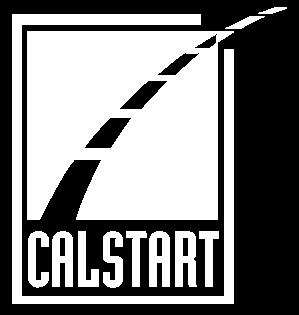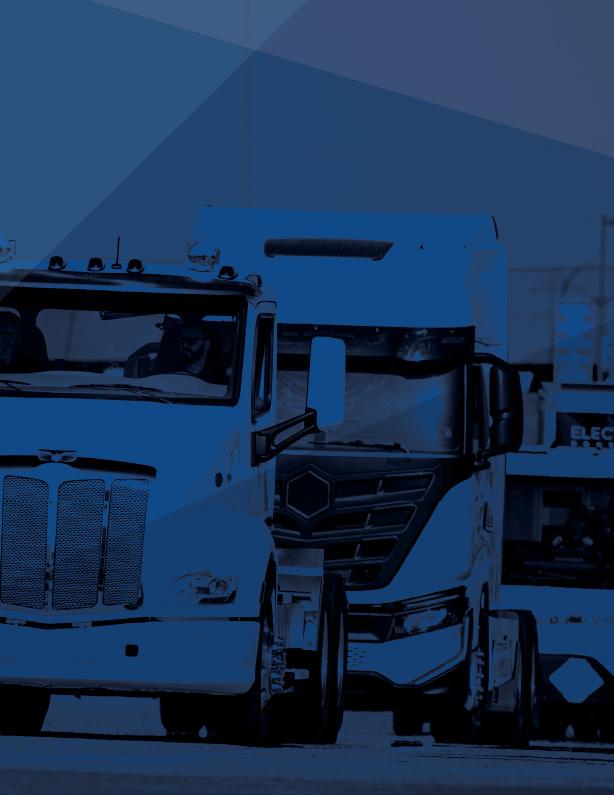

By Kabir Nadkarni | knadkarni@calstart.org
Zero-emission trucks (ZETs) are already being deployed across the country.
More than 30,000 ZETs manufactured by 32 original equipment manufacturers have been deployed between January 2017 and December 2023, representing $3.6 billion in investment ($1.9 billion in 2023 alone).1 Texas, California, and Florida deployed the most ZETs in 2023 (Figure 1). 2 This steep rise in ZETs—especially in states without major incentive programs like Texas and Florida—demonstrates technological and market maturity, especially in vehicle categories like cargo vans and yard tractors.
ZETs Deployed in 2023
Advanced Clean Trucks/Fleets will boost ZET sales starting January 2025.
Beyond the organic expansion of ZETs, 11 states have adopted California’s Advanced Clean Trucks (ACT) rule, mandating that manufacturers sell an increasing percentage of ZE Class 2b–8 vehicles starting in 2025 and ramping up across all categories until 2035. ACT-adopting states include some of the largest U.S. truck markets: California, New York, New Jersey, Washington, Massachusetts, Colorado, Maryland, Oregon, and Vermont. Furthermore, California has adopted the Advanced Clean Fleets (ACF) rule which other states may adopt elements of, mandating ZE requirements for drayage, high-priority, and government fleets to ensure that a portion of truck fleets are ZE. ACT and ACF are together expected to spur $188 billion in ZET investments across the United States (Figure 2). 3
Cumulative ZET Investments in ACT/ACF Adopting States, 2025-2035
ZETs will represent the majority of truck sales across the United States by 2032.
Along with state policies, the U.S. Environmental Protection Agency’s greenhouse gas emissions standards for heavy-duty vehicles will have a transformative impact on U.S. truck sales. Phase 3 of the rule will take effect in 2027—a year in which ZETs are projected to represent 11 percent of new truck sales in the most likely adoption-rate scenario.
By 2032, ZETs will surpass diesel truck sales, representing 56 percent of the market for new trucks (Figure 3).4
California’s Class 8 ZETs alone represent a $28 billion market between 2025–2035.
Representing the largest segment of California’s trucking market, 100 percent of Class 8 trucks sold in California are mandated to be ZE by 2036. 5 This includes straight trucks, tractor trucks, long-haul freight trucks, many transit and school buses, and refuse trucks. Cumulatively, the sale of ZE Class 8 trucks in California represents a $28 billion opportunity (Figure 4).6 Truck manufacturers are already taking advantage of major incentive programs, including California’s Clean Truck and Bus Voucher Incentive Project (HVIP), administered by CALSTART. California’s ZET sector is already two years ahead of the state’s mandated scheduled sales targets—a testament to the popularity of ZETs.
Figure 4. Estimated Market Size of ZET Segments in California, 2025–2035
ZETs are a $200 billion+ market opportunity for the truck leasing and financing sector.
With 43 percent of U.S. ZETs expected to be leased7 and four out of every five purchased ZETs expected to be externally financed,8 CALSTART forecasts a more than $200 billion financing opportunity in this ZET marketplace between 2027 and 2032 (Figure 5).9 This does not include financing for used ZETs, which are expected to constitute another emerging market segment in the coming decade. To address the unique challenges involved in ZE financing, including residual value risk and technology risk, publicly sponsored innovative financing programs like California’s Zero-Emission Truck Loan Pilot Project are available to support lenders. In addition to such incentives, commercial equipment financing companies should take advantage of innovative business models like Truck-as-a-Service (TaaS) and Charging-as-a-Service (CaaS) to lead the multi-billion-dollar ZET financing market.
Self-financed ZETs: $26B
Externally financed ZETs: $103B
Leased ZETs: $97B
Connect with CALSTART to learn about emerging business opportunities in the ZET ecosystem.
Connect with CALSTART and its member companies to learn more about business opportunities in the ZET leasing and financing sector by contacting innovativefinance@calstart.org
A mission-driven industry organization focused on transportation decarbonization and clean air for all, CALSTART has offices in New York, Michigan, Colorado, California, Florida, and Europe. CALSTART is uniquely positioned to build the national clean transportation industry by working closely with its member companies and building on the lessons learned from the major programs it manages for the State of California. CALSTART has more than 280 member companies and manages more than $500 million in vehicle incentive and technical assistance programs in the United States.
1 CALSTART, “Zeroing in on Zero-Emission Trucks: May 2024 Market Update,” 2024. https:// calstart.org/zio-zets. California HVIP, “Voucher Map and Data.” https://californiahvip.org/ impact/#deployed-vehicle-mapping-tool
2 Figure 1 data: CALSTART, “Zeroing in on Zero-Emission Trucks: May 2024 Market Update,” 2024. https://calstart.org/zio-zets.
3 Figure 2 data: CALSTART, “Assessing the Impact of ACT and ACT Through 2030,” 2024. https://calstart.org/act-acf-impact-on-zet-adoption. California HVIP, “Voucher Map and Data.” https://californiahvip.org/impact/#deployed-vehicle-mapping-tool.
4 Figure 3 data: IHS Markit. California HVIP, “Voucher Map and Data.” https://californiahvip.org/impact/#deployed-vehicle-mapping-tool. U.S. EPA, “Final Rule: Greenhouse Gas Emissions Standards for Heavy-Duty Vehicles – Phase 3,”2024. https:// www.epa.gov/regulations-emissions-vehicles-and-engines/final-rule-greenhouse-gasemissions-standards-heavy-duty
5 California Air Resources Board, “Advanced Clean Fleets.” https://ww2.arb.ca.gov/ourwork/programs/advanced-clean-fleets.
6 Figure 4 data: CALSTART, “Assessing the Impact of ACT and ACT Through 2030,” 2024. https://calstart.org/act-acf-impact-on-zet-adoption. California HVIP, “Voucher Map and Data.” https://californiahvip.org/impact/#deployed-vehicle-mapping-tool.
7 Global Fleet, “Wikifleet update: Global Fleet eyes US vehicle leasing footprint,” 2021. https://www.globalfleet.com/en/leasing-and-rental/north-america/analysis/wikifleetupdate-global-fleet-eyes-us-vehicle-leasing-footprint?a=DBL10&curl=1#:~:text=In-theUnited-States%2C-the,of-clients-throughout-the-country
8 NADA, “Vehicle Financing.” https://www.nada.org/nada/issues/vehicle-financing.
9 Figure 5 data: IHS Markit. California HVIP, “Voucher Map and Data.” https://californiahvip.org/impact/#deployed-vehicle-mapping-tool. Global Fleet, “Wikifleet update: Global Fleet eyes US vehicle leasing footprint,” 2021. https://www. globalfleet.com/en/leasing-and-rental/north-america/analysis/wikifleet-updateglobal-fleet-eyes-us-vehicle-leasing-footprint?a=DBL10&curl=1#:~:text=In-the-UnitedStates%2C-the,of-clients-throughout-the-country. NADA, “Vehicle Financing.” https:// www.nada.org/nada/issues/vehicle-financing.
Acknowledgments
This study was funded by the California Air Resources Board’s Clean Truck and Bus Voucher Incentive Project.
www.calstart.org
@CALSTART
© Copyright 2024 CALSTART
